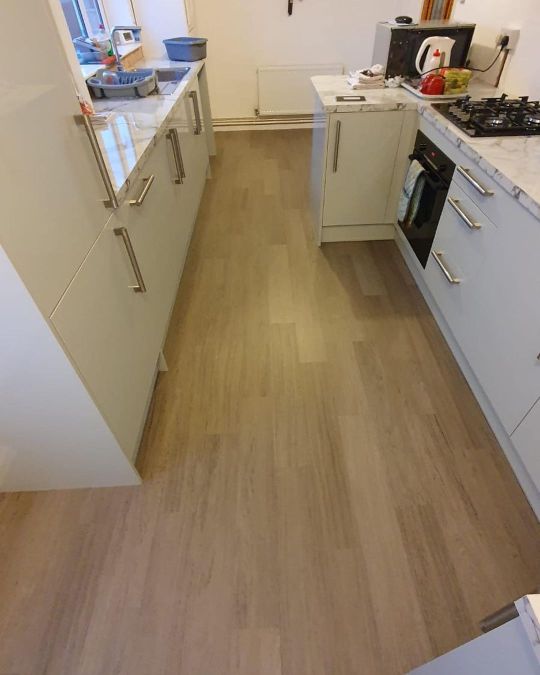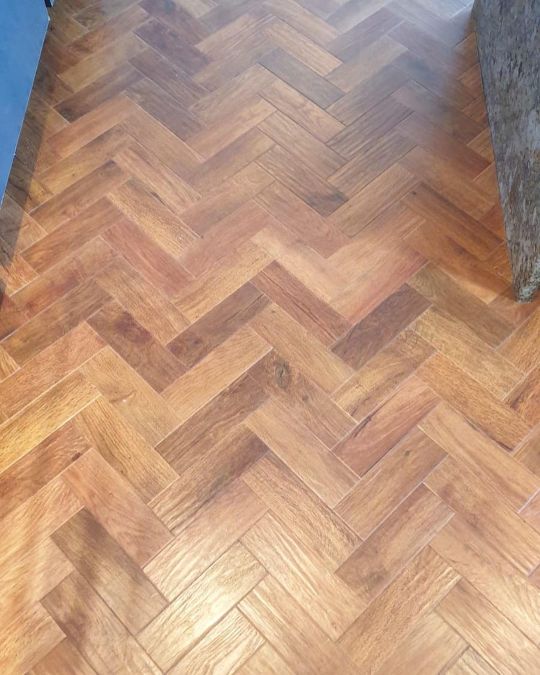#karndean
Photo

Tropical Home Bar in Minneapolis
Large tropical l-shaped limestone floor and brown floor wet bar idea with shaker cabinets, white cabinets, granite countertops, gray backsplash, stone tile backsplash, and multicolored counters.
0 notes
Photo

Karndean Knight Tile KP152 Grey Studio Oak supplied & fitted to kitchen floor. @karndean_uk @karndeandesignflooring #karndean #karndeanlvt #karndeanlvtflooring #karndeanflooring #karndeandesignflooring #karndeanfitter #karndeandavinci #karndeanknighttile #karndeanopus #karndeanvangogh #karndeanartselect #flooring #lvt #lvtflooring #flooringfitter #lvtfitter #lvtflooringfitter @dantetilingandflooringltd https://www.instagram.com/p/CqR4ODpO6DW/?igshid=NGJjMDIxMWI=
#karndean#karndeanlvt#karndeanlvtflooring#karndeanflooring#karndeandesignflooring#karndeanfitter#karndeandavinci#karndeanknighttile#karndeanopus#karndeanvangogh#karndeanartselect#flooring#lvt#lvtflooring#flooringfitter#lvtfitter#lvtflooringfitter
0 notes
Photo

Shabby-chic Style Home Bar
Large cottage-chic wet bar image with a brown floor and a l-shaped limestone floor, shaker cabinets, granite countertops, a gray backsplash, and countertops in a variety of colors.
0 notes
Link
The main advantages of LVT FLOORING are numerous. They're ideal for high-traffic parts, in addition, they fight heat in addition to perspiration, supply a cushioned really feel, and therefore straightforward to fully clean. Each of these floors also boast modern design which can be together fascinating as well as feasible. Anyone with outlook to understand LVT FLOORING as well as data can appear free to look at this amazing https://lvtflooringuk.com blog.
28 notes
·
View notes
Text
The Complete Guide to Stair Nosing: Safety, Style, and Installation
Stair nosing might seem like a small detail in home design, but it plays a crucial role in both the safety and aesthetics of your staircase. This simple yet effective addition to each stair step can significantly enhance the safety of your stairs, reducing the risk of slips and falls while also extending the life of the staircase. Additionally, stair nosing comes in various styles and materials, allowing homeowners to incorporate it seamlessly into their interior design. In this comprehensive guide, we'll delve into everything you need to know about stair nosing, from its importance in safety and compliance with building regulations to the different types available, installation methods, and how to maintain it effectively.
What is Stair Nosing?
Stair nosing refers to the edge of the stair tread that protrudes over the riser, providing a slight extension beyond the vertical face of the step. This extension is typically covered with a material designed to enhance traction, such as metal, rubber, wood, or vinyl. Stair nosing serves several purposes. Primarily, it increases the surface area of the step, making it easier and safer to walk on. By providing a more visible edge, stair nosing also helps prevent trips and falls, especially in low-light conditions or areas where the staircase is heavily used. Additionally, stair nosing helps protect the edges of the stair treads, which are prone to wear and tear over time. By absorbing the impact of foot traffic, stair nosing can prolong the lifespan of the stairs, reducing the need for repairs or replacements. The use of stair nosing is not just functional; it also offers an opportunity to enhance the look of your staircase. Available in a range of materials, colors, and profiles, stair nosing can be chosen to complement the overall design aesthetic of your home.
The Importance of Stair Nosing for Safety
Safety is one of the primary reasons stair nosing is essential. Stairs are a common area for accidents, with slips and falls often resulting in serious injuries. Stair nosing plays a key role in reducing these risks by providing additional traction on each step. The protruding edge of the nosing gives users a clear visual cue, helping them to judge the depth of each step more accurately and reducing the chance of missteps. This is particularly important in environments where lighting may be dim or in homes with children, elderly individuals, or people with visual impairments. Many stair nosings also feature anti-slip properties, such as grooved surfaces or embedded grip strips, which further enhance safety by minimizing the risk of slipping. Beyond personal safety, stair nosing is also crucial for compliance with building codes and regulations in many areas. These regulations often require stair nosing to ensure that staircases meet certain safety standards, especially in commercial or public buildings. By incorporating stair nosing, you not only enhance the safety of your stairs but also adhere to legal safety requirements.
Stair Nosing and Building Regulations
In many regions, building codes and regulations mandate the use of stair nosing in both residential and commercial properties. These regulations are in place to ensure that staircases are safe and accessible to all users. Requirements may include specific dimensions for the nosing, such as the maximum projection over the step or the minimum and maximum width of the nosing. In commercial buildings, regulations often stipulate that stair nosing must be visually contrasting from the rest of the stair tread to provide a clear indication of the step edge, which is particularly important in emergency situations. Anti-slip properties are also commonly required, with building codes specifying the use of materials that enhance grip and reduce the risk of slipping. Failure to comply with these regulations can result in penalties or require costly renovations to bring the staircase up to code. For homeowners, while the regulations may be less stringent, it is still advisable to follow these guidelines to ensure the safety of all household members and visitors. Properly installed stair nosing that meets building standards not only provides peace of mind but also adds to the overall value and appeal of the property.
Types of Stair Nosing Materials
Stair nosing is available in a variety of materials, each offering different benefits in terms of safety, durability, and aesthetics. Aluminum stair nosing is a popular choice for commercial settings due to its strength and ability to withstand heavy foot traffic. It often features a ribbed or grooved surface for enhanced slip resistance. Rubber stair nosing is another option, commonly used in both residential and commercial spaces for its slip-resistant properties and shock-absorbing qualities. Wood stair nosing can be an attractive choice for homes with hardwood stairs, providing a seamless, natural look that blends with the existing stair material. Vinyl nosing is a versatile and affordable option, available in a range of colors and styles to match various decors. It is also known for its slip-resistant surface. Brass and stainless steel stair nosing options are less common but can add a touch of elegance to high-end interiors. These materials are highly durable and often used in luxury settings. When selecting stair nosing, it’s important to consider not only the aesthetic but also the functional aspects, such as slip resistance, durability, and maintenance requirements, to ensure the best fit for your stairs.
Design and Aesthetic Considerations
While safety is the primary concern, stair nosing also plays a significant role in the overall aesthetics of your staircase. The right stair nosing can enhance the visual appeal of your stairs, adding a finishing touch that complements the style of your home. For a modern and minimalist look, sleek aluminum or stainless steel nosing with a brushed finish can provide a clean, understated edge. In contrast, wood stair nosing can create a warm and cohesive appearance, especially when matched with hardwood stairs. For a more dramatic effect, you can choose stair nosing in a contrasting color to the tread to highlight each step and add a visual element to the staircase. Some stair nosing options even incorporate LED lighting, offering a functional and stylish solution for illuminating the stairs in low-light conditions. When selecting stair nosing, consider the overall design theme of your space, the material of the stairs, and how the nosing will integrate with other design elements in the room. By carefully choosing the style and finish of the stair nosing, you can enhance both the safety and beauty of your staircase.
Choosing the Right Stair Nosing for Your Stairs
Selecting the right stair nosing involves considering several factors, including the material, design, safety features, and installation environment. Start by evaluating the type of stairs you have and the amount of foot traffic they receive. For high-traffic areas, durable materials like aluminum or rubber are ideal, as they can withstand heavy use and provide excellent slip resistance. In residential settings where aesthetics are crucial, wood or vinyl stair nosing might be a better choice to match the staircase's existing design. Consider the level of slip resistance required, especially if the stairs are in an area prone to moisture, such as an entryway or near a pool. Opt for stair nosing with anti-slip features, such as grooved surfaces or embedded grip strips, to enhance safety. The installation environment is also important; for outdoor stairs, weather-resistant materials like aluminum or rubber are recommended. Additionally, ensure that the chosen nosing meets local building codes and regulations for safety and accessibility. By taking into account these factors, you can select stair nosing that provides the perfect balance of safety, functionality, and style.
Installation Process of Stair Nosing
Installing stair nosing is a task that requires precision to ensure both safety and a polished finish. The installation process varies depending on the type of stair nosing and the material of the stairs. For adhesive-backed stair nosing, the surface must be thoroughly cleaned and free of debris. The nosing is then pressed firmly into place, ensuring it aligns correctly with the edge of the tread. Screw-fixed nosing involves securing the nosing with screws or nails, often into pre-drilled holes to prevent splitting or damage to the stairs. This method provides a more secure attachment, making it suitable for high-traffic areas. For wooden stair nosing, wood glue and nails may be used, with careful sanding and finishing to blend the nosing seamlessly with the stairs. It's crucial to measure and cut the nosing accurately to fit each step, avoiding gaps that could compromise safety or aesthetics. While some stair nosing can be installed as a DIY project, professional installation is recommended for more complex materials like metal or for staircases in commercial settings where building codes must be strictly followed. Proper installation ensures that the stair nosing performs its function effectively and enhances the overall appearance of the staircase.
Maintenance and Care for Stair Nosing
Maintaining stair nosing is relatively simple and involves routine cleaning and occasional checks for wear and tear. The maintenance required depends largely on the material of the nosing. Metal stair nosing, such as aluminum or stainless steel, should be regularly wiped down with a damp cloth to remove dirt and debris. For nosing with anti-slip inserts, ensure that these are free from grime that could reduce their effectiveness. Wood stair nosing may require periodic refinishing or sealing to maintain its appearance and protect it from moisture damage. Use wood-safe cleaners and avoid excessive water exposure to preserve the finish. Rubber and vinyl stair nosing are typically low-maintenance; they can be cleaned with a mild detergent and water. Inspect the stair nosing periodically for any signs of damage, such as cracks, lifting edges, or worn-out anti-slip surfaces. Promptly address any issues to prevent safety hazards and extend the life of the nosing. Regular maintenance not only keeps your stair nosing looking good but also ensures that it continues to provide a safe and secure surface for stair use.
Common Mistakes to Avoid When Installing Stair Nosing
When installing stair nosing, several common mistakes can affect both safety and the final appearance of the stairs. One frequent error is improper alignment. Misaligned nosing can create an uneven edge, increasing the risk of trips and falls. Accurate measurement and careful placement are crucial to ensure the nosing fits perfectly with each step. Another common mistake is choosing the wrong type of nosing for the stair material or environment. For instance, using indoor-grade nosing on outdoor stairs can lead to premature wear and potential safety issues. Skipping surface preparation is another pitfall; installing nosing on a dirty or uneven surface can compromise adhesion, leading to loose or wobbly nosing. Additionally, neglecting to comply with local building codes regarding nosing dimensions, slip resistance, and visibility can result in safety violations. Finally, opting for DIY installation without the necessary skills or tools can lead to poor results. Professional installation is often recommended, especially for complex or high-traffic staircases. By avoiding these common mistakes, you can ensure that your stair nosing is both safe and aesthetically pleasing.
The Cost and Value of Installing Stair Nosing
The cost of installing stair nosing varies depending on the material, style, and complexity of the installation. Basic vinyl or rubber stair nosing is generally the most affordable option, with prices ranging from $1 to $5 per foot. Metal options like aluminum or stainless steel can range from $5 to $20 per foot, while hardwood nosing may cost $10 to $30 per foot, depending on the wood type and finish. Installation costs can add to the overall expense, particularly if professional installation is required. While this might seem like a significant investment, the value it adds to your home or building is considerable. Stair nosing enhances the safety of your staircase, reducing the risk of accidents and potential liability. It also protects the stairs from wear and tear, extending their lifespan and reducing the need for repairs or replacements. Moreover, stair nosing can enhance the visual appeal of your staircase, adding to the overall value and desirability of the property. In commercial settings, installing stair nosing can ensure compliance with safety regulations, potentially avoiding costly fines or legal issues. Overall, stair nosing is a cost-effective investment that offers lasting benefits in terms of safety, durability, and aesthetics.
Conclusion
Stair nosing is an essential component of any staircase, offering a perfect blend of safety, durability, and aesthetic enhancement. By providing additional traction and visibility on each step, stair nosing significantly reduces the risk of slips and falls, ensuring a safer environment for all users. Its importance is not only recognized in safety but also in compliance with building regulations, especially in commercial settings. With a variety of materials and designs available, stair nosing can be tailored to suit any staircase, complementing both the functional and visual aspects of the space. Proper installation and maintenance of stair nosing ensure that it continues to perform effectively, providing long-term protection for the stairs while enhancing their appearance. While the initial investment in stair nosing may vary, the value it adds in terms of safety, longevity, and property appeal makes it a worthwhile addition to any staircase.
#laminate stair nosing#lvt stair nosing#wooden door bars#amtico stair nosings#laminate flooring stair nose#laminate flooring stair nosing#self adhesive stair nosing#oak nosing for stairs#radiator pipe rose#waterproof vinyl stair nosing#karndean vinyl doorbars#amtico vinyl doorbars#waterproof door bars#wooden stair nosing#wooden door bar#stair nosing laminate#vinyl stair nosing#flooring accessories#wooden nosing for stairs#solid wood door bars#click vinyl flooring doorbars#laminate floor stair nosing
0 notes
Text
Choose Karndean Flooring for Your Bathroom in Poole
Visit Rolls & Rems today to explore the best selection of Karndean flooring near Poole. Our friendly team is here to help you find the perfect style for your home. Don’t wait – give your bathroom the makeover it deserves! Your dream bathroom is just a step away!
0 notes
Photo

Living Room Home Bar in West Midlands
Mid-sized minimalist living room photo with a bar, gray walls, a two-sided fireplace, a metal fireplace and a tv stand
0 notes
Photo

Home Bar in Minneapolis
Large cottage-chic wet bar image with a brown floor and a l-shaped limestone floor, shaker cabinets, granite countertops, a gray backsplash, and countertops in a variety of colors.
0 notes
Photo

Basement in Detroit
Inspiration for a large craftsman underground vinyl floor and gray floor basement remodel with gray walls, a standard fireplace and a brick fireplace
0 notes
Text
Basement Underground Detroit

Inspiration for a large craftsman underground vinyl floor and gray floor basement remodel with gray walls, a standard fireplace and a brick fireplace
0 notes
Text
Uncover the pros and cons of Karndean floorings. Explore their advantages and disadvantages to make an informed flooring decision for your space.
0 notes
Photo

Basement Underground Detroit
Example of a large arts and crafts underground vinyl floor and gray floor basement design with gray walls, a standard fireplace and a brick fireplace
0 notes
Photo

Karndean Art Select AP02 Aubrun Oak supplied & fitted to lounge, study, toilet & diner floors to tie into existing which we laid over 4yrs. @karndean_uk @karndeandesignflooring #karndean #karndeanlvt #karndeanlvtflooring #karndeanflooring #karndeandesignflooring #karndeanfitter #karndeandavinci #karndeanknighttile #karndeanopus #karndeanvangogh #karndeanartselect #flooring #lvt #lvtflooring #flooringfitter #lvtfitter #lvtflooringfitter @dantetilingandflooringltd https://www.instagram.com/p/CqR3p-nrD-p/?igshid=NGJjMDIxMWI=
#karndean#karndeanlvt#karndeanlvtflooring#karndeanflooring#karndeandesignflooring#karndeanfitter#karndeandavinci#karndeanknighttile#karndeanopus#karndeanvangogh#karndeanartselect#flooring#lvt#lvtflooring#flooringfitter#lvtfitter#lvtflooringfitter
0 notes
Text
Detroit Basement

Example of a large arts and crafts underground vinyl floor and gray floor basement design with gray walls, a standard fireplace and a brick fireplace
0 notes
Photo

Home Bar Minneapolis
Large tropical l-shaped limestone floor and brown floor wet bar idea with shaker cabinets, white cabinets, granite countertops, gray backsplash, stone tile backsplash, and multicolored counters.
0 notes